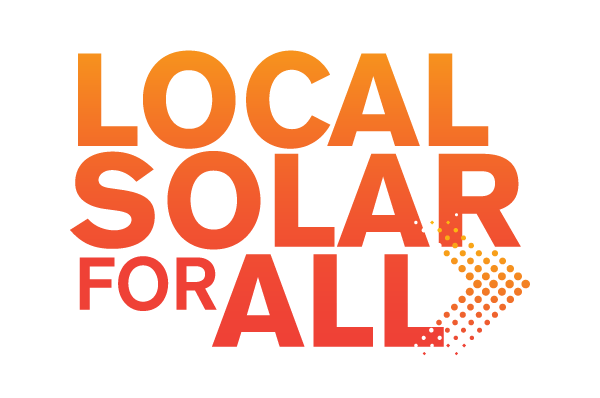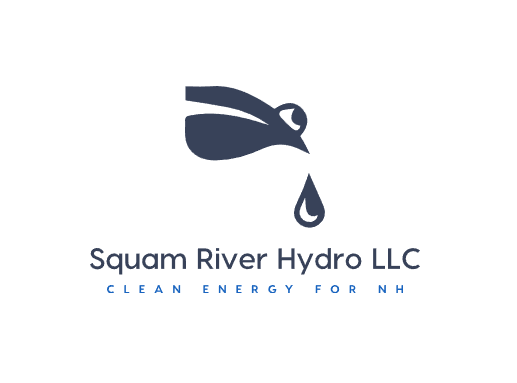Interconnection rules govern how renewable energy connects to the electric grid. State interconnection rules govern these processes for local clean energy projects—like community solar, rooftop solar, and home batteries (also known as distributed energy resources or DERs).
Local clean energy is a critical component of the least-cost path to a sustainable grid—in addition to providing numerous other benefits like utility bill savings; reliability and resilience benefits for communities and the grid; job creation; and fighting climate change. But to unlock these benefits we need effective state interconnection rules.
Learn About State Interconnection Rules
Why Is Local Clean Energy Important?
In recent years, there has been growing awareness of the importance of interconnection, even spurring coverage in the New York Times. But most of the mainstream dialogue has focused on the interconnection of large, utility-scale clean energy systems governed by federal policies.
State interconnection rules have typically gotten less attention. But local clean energy systems, whose interconnection depends on these rules, are just as important as utility-scale. They are a fundamental part of our clean energy future for a number of reasons:
- The least-cost path to a clean energy future requires local clean energy. In fact, getting to a low-carbon grid with a mix of local clean energy and utility-scale will save U.S. ratepayers $473 billion by 2050 compared to utility-scale alone, according to research commissioned by Local Solar for All.
- Local clean energy can offer resilience and reliability benefits, and help the electric grid. Local clean energy systems, especially energy storage and microgrids, can help communities keep the lights on during extreme weather, which is becoming more frequent due to climate change. Additionally, local clean energy can provide valuable benefits to the grid overall, easing stress on the system.
- Local clean energy is a job creator. In fact, local clean energy (residential, commercial, and community-scale) provides more jobs per megawatt than utility-scale clean energy and helps keep those jobs local.
- Renewable energy is an essential resource to fight climate change (and provides other environmental benefits like cleaner air). This transition will require clean energy at all levels of the grid, including local systems for families and businesses.
- Local clean energy can help people and businesses save money on their utility bills. This is particularly valuable for low-income individuals and families, who are known to have higher energy burdens — meaning they spend more on electricity as a proportion of their income.
Why Are State Interconnection Rules Important?
The many benefits of local clean energy are only accessible when those projects are able to connect to the grid. When state interconnection rules do not reflect the latest best practices, it can severely impede the transition to clean energy.
Out-of-date or poorly designed state interconnection rules can cause customers to face long wait times (sometimes multiple years!) or excessive costs that hinder their ability to adopt clean energy. These challenges can also cause clean energy developers to lose out on business and stall market growth.
But clean energy customers and developers aren’t the only beneficiaries when state interconnection rules are optimized. Improved interconnection processes can also benefit utilities through more efficient processes that reduce labor for their staff.
And all utility customers, even those who do not adopt clean energy, benefit from optimized state interconnection rules because it is significantly more affordable to transition to a clean energy grid with a mix of local clean energy and larger, utility-scale systems. In fact, research commissioned by Local Solar for All has shown that this approach can save U.S. ratepayers $473 billion by 2050 compared to utility-scale alone!
Finally, state interconnection rules have important equity implications, as we discuss below.
How Do State Interconnection Rules Intersect with Energy Equity?
Recent data show that disinvested communities,1 including communities of color and low-income communities, often have local electric grids that are less able to accommodate new clean energy resources due to lack of grid infrastructure investment. That means expensive grid upgrades in those areas are more likely to be necessary for local clean energy to interconnect, exacerbating barriers to equitable access to clean energy.
Additionally, community solar is one of the best options for individuals who face barriers to owning their own renewable energy systems (such as renters and those living in multifamily buildings). Community solar projects that serve low-income customers and disadvantaged communities are particularly susceptible to barriers caused by poor interconnection rules.
Interconnection policies that fairly distribute grid upgrade costs and ensure efficient review processes for local clean energy systems, like community solar, can help ensure more equitable access to the benefits of clean energy.
How Does the Interconnection Process Work?

The interconnection process can be broken down into six stages:
- In the first stage, the interconnection customer can use available tools, such as pre-application reports or hosting capacity maps, to determine project siting, design, and estimated costs.
- During the next stage, the customer submits an application for their project to the electric utility. Once the application is deemed complete, it enters the utility’s interconnection queue, which is essentially the waiting list for project review.
- In the Evaluation stage, the utility reviews proposed projects (typically in a “first come, first served” manner) to determine if they could cause adverse impacts to the grid that require additional study or upgrades to grid equipment.
- During the Agreements stage, both parties sign the interconnection agreement and the interconnection customer pays for any required interconnection costs.
- In the next stage, the interconnection customer constructs the project and the utility completes any necessary grid upgrades.
- During the final stage, the utility performs a series of final system checks before authorizing the project to begin operation.
What Do Good State Interconnection Rules Look Like?
There are several key characteristics of interconnection policies that align with best practices. State interconnection rules with these characteristics are more likely to enable local clean energy to connect to the grid in a cost-effective, timely, and transparent process.
Good state interconnection policies:
- Enable efficient reviews of projects requesting to interconnect.
- Enable the advanced capabilities of energy storage.
- Distribute grid upgrade costs fairly.
- Include accountability mechanisms.
- Facilitate customer access to data on grid conditions.
- Incorporate the latest technical standards, particularly IEEE 1547TM-2018.
Many states have outdated interconnection procedures that lack these characteristics, putting ambitious state and federal clean energy goals at risk. For example, IREC and Vote Solar’s Freeing the Grid state interconnection scorecard found that only 8 states scored a “B” or better. Over 23 states don’t specify efficient timeframes for any step in the interconnection process.
As a result, interconnection remains one of the most daunting tasks in the clean energy adoption process. According to a 2021 installer survey by the Institute for Local Self-Reliance, nearly 80 percent of respondents identified state interconnection rules as the barriers that create the highest costs and longest delays in the local clean energy installation process.
Join Us in Raising Awareness About State Interconnection Rules!
#StateInterconnectionRules is a communications campaign raising awareness that these policies are some of the most important for meeting U.S. clean energy and climate goals. Join us in spreading the word!
| When | September 5 – November 9, 2023 |
| What | Share our campaign messages on social media and by email. We make it easy with our robust toolkit of template language and materials! |
| How | Participate in one of two ways: 1. Organizations can complete this form to sign on as official campaign partners (partnership details here). 2. We also welcome you to participate informally, sharing the campaign content on your own social media accounts and with your professional network. Please use the #StateInterconnectionRules hashtag in your posts. |

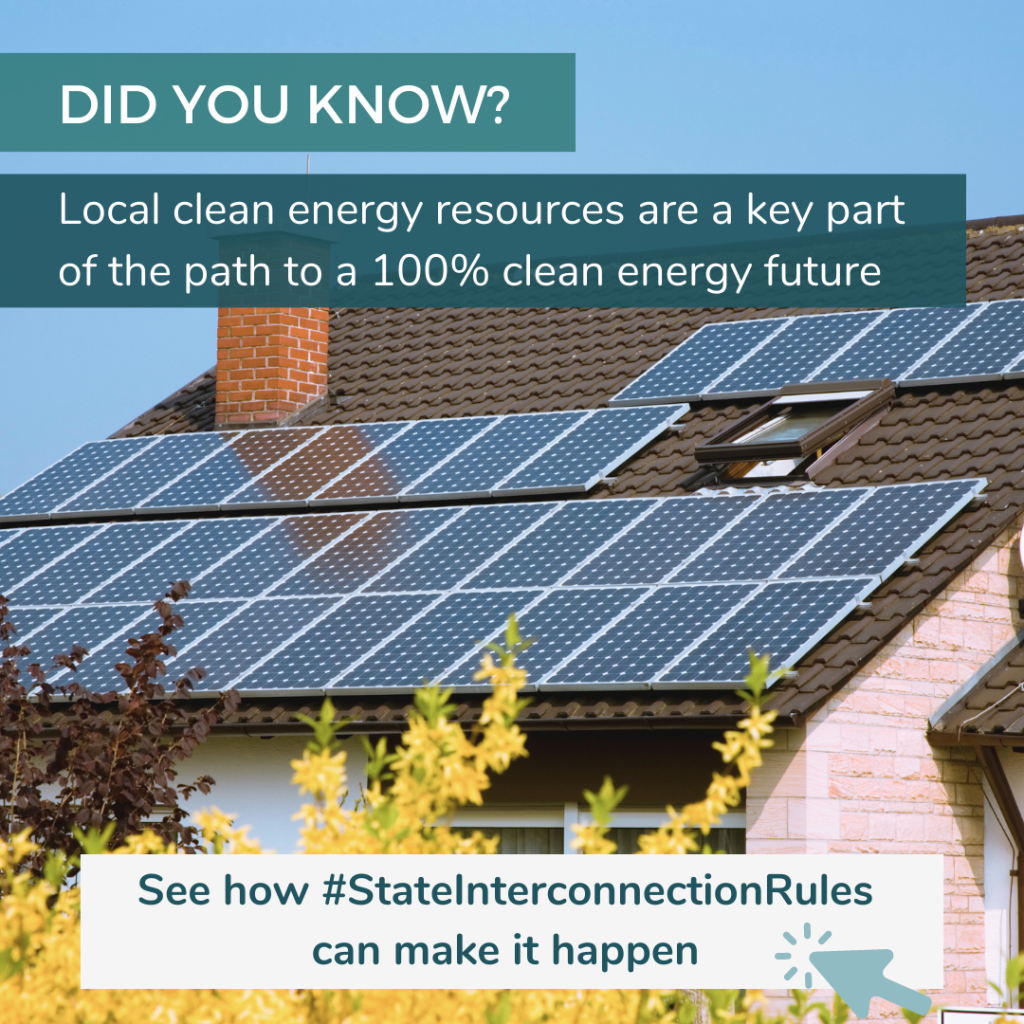
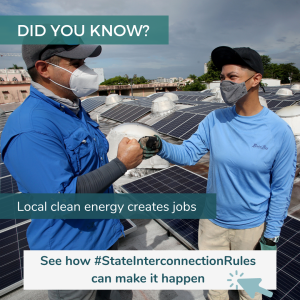
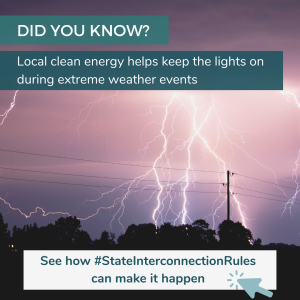
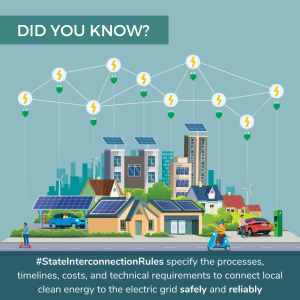
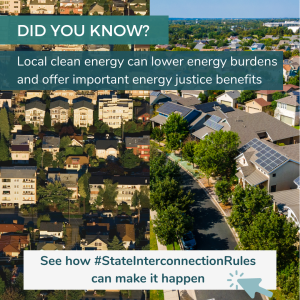
Rock Out with Interconnection!
(Long Version)
(Short Version)
Campaign Partners
Partners of the State Interconnection Rules campaign include clean energy leaders across the nation, spanning public interest nonprofits and private sector businesses.
Want to Join This Group?

Larry Sherwood
IREC President & CEOWithout improvements to align with new best practices that have emerged over the last several years, state interconnection policies are likely to be a barrier to the efficient and affordable growth of local clean energy, holding back the pace at which clean energy and climate goals can be met.

Help Us Spread the Word!
Template Posts for X (formerly Twitter)
Click to Tweet | Did you know that #StateInterconnectionRules specify the processes, timelines, costs, and technical requirements to connect #localcleanenergy to the electric grid safely and reliably? Learn more at bit.ly/StateInterconnectionRules
Click to Tweet | Without well-designed #StateInterconnectionRules, local #cleanenergy projects like rooftop and community #solar can get stuck waiting months or years to connect to the #grid. Learn more & help spread the word at bit.ly/StateInterconnectionRules
Click to Tweet | Getting to a 100% #cleanenergy future will require well-designed policies to connect #localcleanenergy to the #grid. Learn more about why #StateInterconnectionRules at bit.ly/StateInterconnectionRules
Join as a Campaign Partner
We welcome additional organizations to join the campaign as partners. Partner organizations commit to a two-week period between Sept. 5 and Nov. 9, 2023 in which they share campaign messages with your audiences on social media and email (full details here).
Expand Your Knowledge
Interconnection-Related Reports and Resources
Watch On-Demand: State Interconnection Rules: Why We Need Effective Interconnection Policies for Local Clean Energy
This panel discussion brings together clean energy experts to explore the critical nature of state interconnection rules and examine the best practices that characterize effective practices for DER interconnection. It also highlights a new communications campaign that makes it easy for stakeholders of all types to learn about this topic and educate others. Attendees of this webinar will learn:
- what state interconnection rules are,
- why these policies are so important, and
- the key characteristics of effective state interconnection rules based on the latest best practices for connecting local clean energy to the electric grid.
Attendees will also hear about the #StateInterconnectionRules campaign and how they can get involved. This broad and inclusive communications campaign, running through November 9, 2023, compiles resources to learn about state interconnection policies and amplify their importance in support of a clean energy future.
Blog Posts and Articles on State Interconnection Rules
- State Interconnection Rules: The Gatekeepers to Energy Storage
- Interconnection Is Broken: Radical Rethinking Is Needed to Achieve Clean Energy Goals
- We Need Interconnection Reform to Unlock the Benefits of Energy Storage
- Improving Interconnection Timelines: The Need for Data and Enforcement
- How New Mexico’s New Interconnection Rules Position It as a Clean Energy Leader
- Minnesota PUC Fines Xcel Energy $1 Million for Interconnection Failures
- MN Interconnection Ruling Contains Some Wins and a Major Threat






